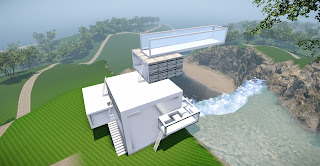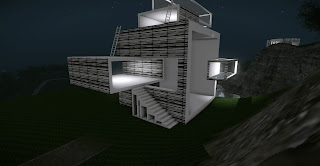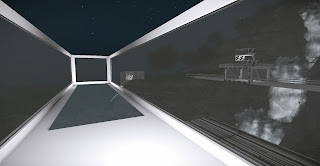Electroliquid Aggregation
Fluid Forms and Spaces created by the subtraction and addition of Geometrical Shapes.
2 Short Texts: Concepts
Monument 1
Architect: Zaha Hadid
Concept: Fluid Forms and Spaces within Forms
The concept places a heavy emphasis on the interior space of "forms" and how it flows smoothly from one space to another. In my monument inspired by Zaha Hadid's concept, th fluidity is represented through the connection of each prism. Detailed elements within the space e.g. the roof pattern and the shadow cast, the miniature monument and the benches also emulate the fluidity of forms, within forms.
Monument 2
Architect: Norma Merrick Sklarek
Concept: Subtraction of Geometrical Forms
This concept reflects Norma Merricks Sklarek's designs, often being angular with blunt indented areas seemingly having been "cut" out from. Thus the concept "Subtraction of geometrical forms". The original axonometric which stemmed from this concept was too basic, so the design was developed to place a more heavy emphasis of the subtraction of geometric forms. To achieve this, large prisms were stacked on top of each other to accentuate each individual shape, and was further developed to create a model which monumentalises the concept and the architect.
18 Sketch Axonometrics
Original Axonometrics
 |
Top Row Client: Norma Merrick Sklarek
(Ordered left through to right)
1. Architecture as Simple Lines
2. Grid-like Structures
3. Subtraction of Geometrical Forms
Bottom Row Client: Zaha Hadid(Ordered left through to right)
1. Fluid Forms and Spaces Within Forms
2. Architecture as Fluid Geometries Emerging from the Landscape
3. Spaces in Synchronicity with their Surroundings
|
Combined Parallel Projections
 |
Concepts(ordered left through to right)
1. Fluid Forms and Spaces within Forms + Subtraction of Geometrical Forms
2. Architecture as Simple Lines + Architecture as Fluid Geometries Emerging with the Landscape
3. Spaces in Synchronicity with their Surroundings + Grid-like Structures
|
36 Custom Textures
Applied Textures
 |
LHS: Zaha Hadid's Monument
Concept - Fluid Forms and Spaces within Forms
Centre: Norma Merrick Sklarek's Monument
Concept - Subtraction of Geometrical Forms
RHS: Meeting Space |
5 Real Time Images
"Fluid Forms and Spaces created by the subtraction and addition of Geometrical Shapes."
Links
Dropbox File: https://www.dropbox.com/s/493cjjd9doj2gz9/Levels.rar
Note: There are two files in the dropbox file, one has lights meant for viewing past sunset and one is without lighting which is meant to be viewed during the day.




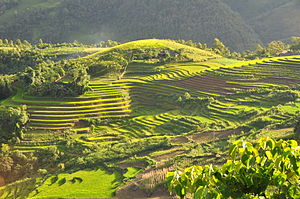





.jpg)
.jpg)
.jpg)
.jpg)
.jpg)
.jpg)
.jpg)
.jpg)
.jpg)




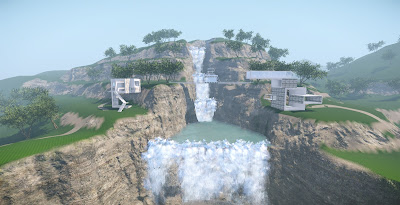

.bmp)




















